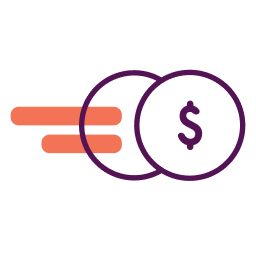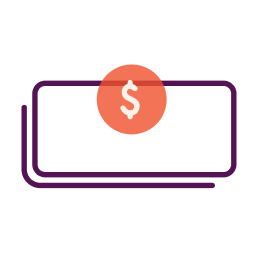Get to know SBA Disaster Loans
Gerri Detweiler • March 15, 2021
How SBA Disaster Loans Work
The United States has suffered a number of major disasters in recent years, including wildfires, earthquakes, droughts, hurricanes and flooding. And, of course, the national COVID-19 crisis. If your business was affected by a natural disaster and you’re seeking disaster relief, you may be eligible for disaster loans from the Small Business Administration (SBA). These low-cost loans help businesses rebuild and get back to work, keeping you in operation.
Continue reading to learn about SBA disaster assistance and SBA disaster loans, determine your loan eligibility, and learn how you can apply for one.

Top Financial Options
Your small business financing search stops here. Compare your top small business financing options, from over 160 financial products – with Nav.
Types of Disaster Loans
The Small Business Administration (SBA) provides financial assistance to businesses of all sizes, most private nonprofit organizations, homeowners, and renters following a declared disaster, through its Office of Disaster Assistance (ODA). In addition SBA provides eligible small businesses necessary working capital to help overcome the substantial economic injury of a declared disaster. The SBA’s disaster loan program is the only form of assistance not limited to small businesses. This program provides low-interest, long-term loans.
SBA offers five types of disaster loans. These SBA programs are: Home, Business/EIDL (B/E), Non-profit, Stand Alone EIDL, Military Reservist EIDL (MREIDL). For the purposes of this article, we’ll focus primarily on the disaster loans available to businesses.
Business Physical Disaster Loans
Are often used to repair or replace property damaged during a disaster, such as a hurricane or an earthquake.
Businesses in a declared disaster area can receive up to $2 million to repair or replace real estate, machinery, equipment, inventory, leasehold improvements, or fixtures. An SBA disaster loan for businesses is designed to cover losses not fully covered by insurance. SBA disaster loans are intended solely for recovery efforts; they can’t be used to upgrade or expand your business. (Businesses that are considered a major source of employment may be eligible for more funds.)
Homeowners can get a loan for up to $200,000 to repair or replace their primary residence, or to make structural improvements to lessen the impact of future disasters. Renters and homeowners can also borrow up to $40,000 to repair or replace personal property, including vehicles, furniture, and appliances.
Economic Injury Disaster Loans
Many business owners are familiar with Economic Injury Disaster Loans (EIDL) due to the coronavirus crisis, but these loans have been around for some time. Generally, the EIDL program provides up to $2 million in the form of low-interest loans to businesses suffering economic injury due to a declared disaster. These loans are available to eligible small businesses, eligible non-profit organizations, and eligible small agricultural cooperatives located in a disaster area that suffered substantial economic injury as a result of the disaster.
EIDL Grants
The CARES Act also created an emergency grant (EIDL Advance) of up to $10,000 that does not have to be repaid. That program was modified by the Economic Aid Act passed December 27, 2020, to provide Targeted EIDL Advances (grants) of up to $10,000 to certain small businesses. The American Rescue Plan passed by Congress March 11, 2021 adds supplemental grants of up to $5000 to businesses suffering severe economic loss due to the pandemic.
PPP Loans
Although they are not disaster loans, it is worth mentioning the Paycheck Protection Plan (PPP) Loan Program which provides businesses impacted by the COVID-19 crisis with forgivable loans, generally based on 2.5x a business’ average monthly payroll costs, up to $10 million. This program was expanded in 2021 to include a second draw PPP loan of up to $2 million for qualified small businesses. Second draw loans provide slightly larger loans for certain businesses in the hospitality industry (NAICS Code 72) and the self-employed, including independent contractors. Businesses can apply for loan forgiveness if they can prove they used these expenses for payroll, interest on a mortgage, rent, or utilities and other covered expenses.

See How Much SBA Loan Money You Qualify For
Use our CARES Act SBA loan calculator to see how much money your business may qualify to get.

What are the SBA Disaster Loan Terms?
SBA Disaster Loans carry low fixed interest rates and generally feature low fixed monthly payments. Interest rates are fixed for the entire life of the loan, are determined by formulas set by law, and may vary from disaster to disaster with market conditions.
The interest rate for EIDLs due to COVID-19 is a fixed rate of 3.75% for for-profit businesses, and 2.75% for non-profit businesses. These loans carry a 30-year repayment term.
For Business Physical Disaster Loans, the interest rate and terms will depend on something called the “credit elsewhere test.” That refers to whether the borrower has the ability to borrow from non-government sources at reasonable terms to provide for its own disaster recovery. The SBA will determine whether you have credit available elsewhere.
If the SBA determines you do not have credit available elsewhere, currently your interest rate will be a maximum of 4% and terms will be 15 years, or a maximum of 30 years.
If the SBA determines you do have credit available elsewhere, currently your interest rate will be a maximum of 8% and your loan term will be a maximum of 7 years.
SBA sets the installment payment amount and corresponding maturity based upon each borrower’s ability to repay.

Who Qualifies for SBA Disaster Loans?
First, both physical and economic injury disaster loans are available to businesses located in a declared disaster area. You can view the list of current declared disaster areas on the SBA website.
For EIDL due to the pandemic, applicants must be physically located in the United States or designated territory and suffered working capital losses due to the Coronavirus pandemic. Eligible applicants include:
- Businesses with 500 or fewer employees or defined as small under SBA size standards
- Cooperatives with 500 or fewer employees
- Agricultural businesses with 500 or fewer employees
- Most private nonprofits
- Faith-based organizations
- Sole proprietorships and independent contractors
For other EIDL disaster loans (not as a result of the pandemic), the business must be a small business located within a declared disaster area. A small business is “deemed to be one which is independently owned and operated and which is not dominant in its field of operation.”
Certain types of businesses are ineligible, including businesses that derive more than one-third of their annual gross revenue from legal gambling activities; casinos and racetracks; and political and lobbying concerns.
There are a variety of other factors that may impact whether you qualify for a disaster loan generally:
- Credit (personal credit)
The SBA requires acceptable credit, and it will review credit reports to determine if obligations, including any current or past Federal debts, have been or are being met. There will be a personal credit check, and that will generally apply to any individual with 20% or greater ownership. The SBA states in its guidelines that a credit history that “consists of minor, isolated instances of adverse credit or late payments is acceptable.” Significant negative items such as judgments, collection accounts, foreclosure etc may be overcome if the applicant can adequately explain the lapse (divorce or serious medical incident for example) and the credit report shows other on-time payment history.
The SBA notes that “non-medical collections or charged off accounts with an aggregate of $10,000 or less and foreclosures or deed-in lieu of foreclosures which occurred more than two years from the date of the loan application are all considered an acceptable credit risk and do not require any additional justification.” - Business credit
All business and EIDL applications will involve a business credit check from Dun & Bradstreet or a similar business credit reporting company when the approved loan amount is $200,000 or more, with the exception of sole proprietorships. - Child support
Federal law prohibits SBA from approving a disaster loan to an applicant who is more than sixty (60) days delinquent on child support obligations. (They may be approved if they are current on a payment plan to pay past due child support.) - Collateral
SBA loans over $25,000 must be secured by collateral if available. However, the SBA won’t decline your loan application if you don’t have enough property to serve as collateral. However, the organization will ask for whatever collateral is available, including real estate owned by the owners of the business. - Criminal history
Generally the SBA won’t approve a disaster loan if the applicant or principal owner is presently on parole or probation following conviction of a serious criminal offense. There are some exceptions here, so ask the SBA for more information if this applies. - Debt
The SBA will review your income and debts to establish a maximum debt level and target loan payment that leaves enough cash available to meet necessary living expenses and support repayment of additional debt. This is part of the calculation to ensure you can repay the debt. - Delinquent federal debts
You may have trouble qualifying for an SBA loan if you have defaulted on a federal debt, including federal taxes or student loans. The SBA will obtain three years of tax returns from a business applicant, in part to identify these delinquent debts.
Guarantees
Generally, SBA requires all the business principals to provide a personal guarantee of the loan. (EIDL loans due to COVID-19 only require a personal guarantee if the loan amount is more than $200,000.) - Income
The SBA must determine whether you have the ability to repay the loan. They may look at income from all sources. - Insurance
Your business may be required to maintain hazard or flood insurance if you get a disaster loan. Generally the SBA requires insurance on loans to protect both the damaged property and all insurable collateral. - Startups
For physical disaster loans, a business that was in the process of starting operations and had purchased fixed assets, inventory, etc., that was subsequently damaged or destroyed by the disaster is eligible. This is true even if that business had not actually “opened its doors” before the disaster occurred.

How Much Will My Disaster Loan Be?
For a Business Physical Disaster Loan, an SBA Loss Verifier will estimate the cost to repair or replace the disaster damaged property. Since the purpose of physical disaster loans is to return the damaged property as nearly as possible to its pre-disaster condition, the loan amount will generally be the cost to repair or replace the damage, minus any insurance proceeds that are intended to cover those costs. Any other aid received (such as grants) will also likely be deducted from loan proceeds.
If you make improvements that help reduce the risk of future property damage caused by similar disasters — such as upgrading your building’s roof to better withstand hurricane-force winds — you may be eligible for a loan worth 20 percent more than the real estate damage.
For EIDL, the SBA has a couple of options for calculating loan amount. The SBA will calculate the loan amount; you do not request a specific loan amount. (See pages 73 – 74 of the Standard Operating Procedures if interested.) Note that for EIDL due to COVID-19, the SBA capped the loan amount at $150,000 due to demand.
What Can I Use My Disaster Loan For?
Physical disaster loans may be used to repair or replace disaster damaged property owned by the business, including real estate, leasehold improvements, inventories, supplies, machinery and equipment. Businesses of any size are eligible. Private non- profit (PNP) organizations such as charities, churches, private universities, etc. are also eligible.
EIDLs are working capital loans that are designed to meet their financial obligations and operating expenses that cannot be met as a direct result of the disaster. Uses may include paying fixed debts, payroll, accounts payable and other bills that cannot be paid because of the disaster’s impact.
There are some specific ways EIDL assistance funds may not be used, including payment of any dividends or bonuses or refinancing long term debt. Learn more about ways you can and cannot use EIDL proceeds here.
Generally, SBA loan funds may be used to relocate. However, by regulation SBA disaster loan funds may not be used to relocate voluntarily outside the business area where the disaster occurred. If it is necessary for your business to relocate outside your local area due to the disaster, ask the SBA for guidance.
How to Apply for a SBA Disaster Loan
To apply for disaster loan assistance, go to the SBA’s website. There you can apply for a Disaster Loan and/or an Economic Injury Disaster Loan. You will be asked questions about how long you have been in business and where it is located, as well as required to provide a financial statement, schedule of liabilities, and tax return for your business.
There are deadlines that often apply so don’t wait to apply if you think you may qualify and need this assistance.
To apply for the SBA Disaster Loan program (for loans not related to COVID-19), follow these steps:
- Register with the Federal Emergency Management Agency (FEMA)
You must obtain a FEMA registration number before you begin the application process. To get one, call 1-800-621-3362 or visit DisasterAssistance.gov. - Gather information
On the application, you’ll need to provide your Social Security number, FEMA registration number, contact information, deed or lease information, insurance information, financial information, and employer identification number. You’ll also need to complete IRS Form 4506-T, which allows the SBA to access your tax returns. - Complete the application
Fill out the necessary information on the application, including a disaster declaration, and submit. - Wait to hear back from the SBA
The SBA will review your application and will pull your credit report. - Undergo an estimate
An SBA verifier will estimate the total physical loss to your property and business. In the future, depending on business expenses, you may qualify for certain forms of financial assistance. - Complete loan closing documents
If approved, the SBA will send you the loan closing documents. Once the SBA receives the signed documents, you will get an initial disbursement within five days. For physical damage, you’ll receive $25,000. For economic injury or working capital, you’ll get $25,000, in addition to the money you received for physical damage. - Work with your case manager
An SBA case manager will be assigned to you. The case manager will make sure you get the full loan amount, and will help you meet all loan conditions.
Will SBA Disaster Loans Be Forgiven?
SBA disaster loans are not forgivable loans. Borrowers are expected to repay these loans. If you received an EIDL emergency advance (also called the EIDL Grant or Targeted EIDL Advance) it does not need to be repaid, and the IRS will not consider it to be taxable income. (Grants may be taxed at the state level; check with your accounting professional.)
How Do I Repay My Disaster Loan?
For the EIDL, you will repay the loan directly to the SBA. (For PPP, you will repay to the lender that gave you the loan.)
Repayment terms can be quite flexible for SBA disaster loans. You can repay the loan amounts in three different ways:
- Phone
Call 1-800-659-2955. - Online
Visit Pay.gov to make one-time or recurring payments. - Mail
Send a check or money order with your loan number written on it to the address written on your loan documents.
Due to the pandemic, the SBA has announced extended deferment periods for all disaster loans, including the COVID-19 Economic Injury Disaster Loan (EIDL) program, until 2022.
- All SBA disaster loans made in calendar year 2020, including COVID-19 EIDL, will have a first payment due date extended from 12-months to 24-months from the date of the note.
- All SBA disaster loans made in calendar year 2021, including COVID-19 EIDL, will have a first payment due date extended from 12-months to 18-months from the date of the note.
Note Existing SBA disaster loans approved prior to 2020 in regular servicing status as of March 1, 2020, received an automatic deferment of principal and interest payments through December 31, 2020. This initial deferment period was subsequently extended through March 31, 2021. An additional 12-month deferment of principal and interest payments will be automatically granted to these borrowers. Borrowers will resume their regular payment schedule with the payment immediately preceding March 31, 2022, unless the borrower voluntarily continues to make payments while on deferment.
Since interest continues to accrue during deferment, borrowers may want to consider making payments sooner if they are able.

Getting Help After a Disaster
If you’re a small business owner recovering from floods, fires or other natural disasters, or if your business was impacted by the pandemic, SBA disaster loan can give you the money you need to rebuild property, replace inventory, cover working capital expenses, and get back to business. With a low-interest loan, you may continue business operations and get through this difficult time.
Are you a small business owner looking for other funding options? One option is an SBA Microloan. Through this program, you can borrow up to $50,000 to start and expand a small business.
Other SBA loan options include a SBA 7(a) loan or a SBA 504 loan to purchase real estate, machinery, or equipment. You can even apply for an SBA Express loan, which guarantees a response within 36 hours
With the exception of disaster loans, the key is to apply for an SBA loan before you desperately need it, if possible. Staying on top of your finances can help you determine how much runway you have financially. When times are uncertain, it’s better to have more than you think you need than not enough.
